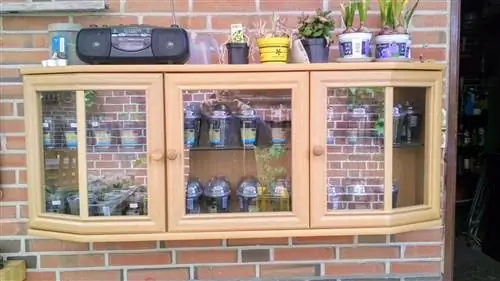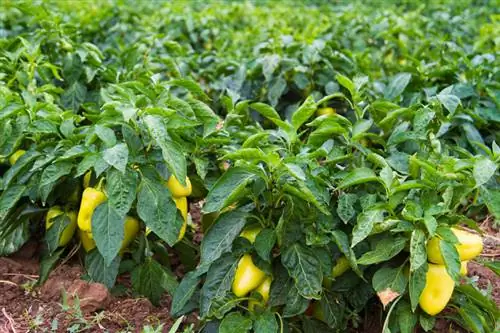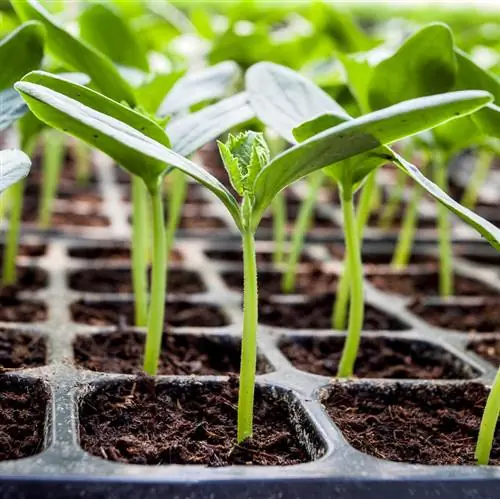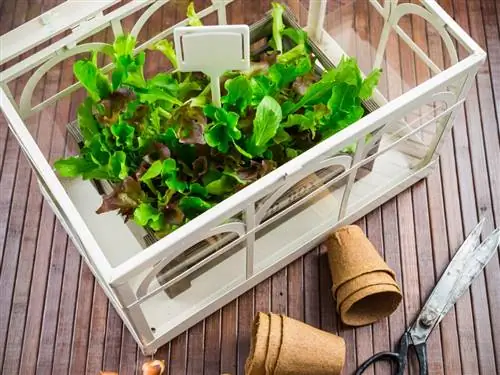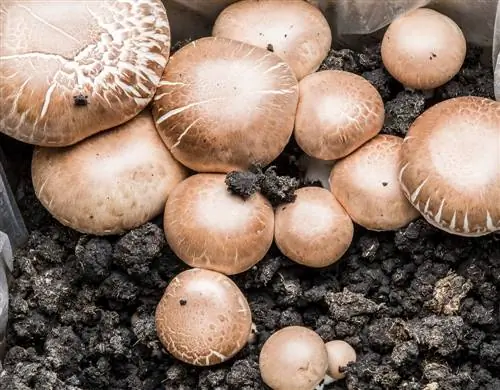- Author admin [email protected].
- Public 2023-12-24 06:09.
- Last modified 2025-01-23 11:22.
They don't grow quite as lushly as they do outdoors. Nevertheless, with a little skill and a talent for improvisation, you can grow many delicious vegetables in a self-built greenhouse for balconies. The necessary utensils can be obtained quickly so that you can soon start harvesting even if you don't have your own garden.
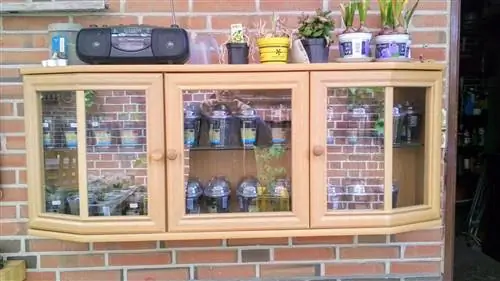
How does a greenhouse on the balcony work?
A greenhouse on the balcony allows you to grow young plants, grow small vegetables such as lettuce, radishes, tomatoes, cucumbers and peppers, and create a herb collection. Homemade mini greenhouses can be made from old kitchen cabinets with glass windows.
There are many people who would love to grow crunchy, he althy vegetables or a few fresh herbs for their kitchen instead of constantly having to eat industrially produced food. But you just don't have a garden to grow your own. However, that does not mean that parsley, cucumbers or aromatic tomatoes have to be completely avoided, as long asa balcony is available or at least a few light-flooded window sills are free in the rented apartment.
Mini in size, Maxi in yield
There is space in the smallest hut and in principle you have the opportunity to grow many of the common vegetables yourself, even on the narrowest balcony and with simple means. But a greenhouse on the balcony (?), some people might be wondering. Yes, it's possible and, as with the larger models, you can buy the little mini oases ready-made or, what's even more fun, you can assemble them yourself cheaply or for free.
Special features of the balcony minis
Since space is limited, a greenhouse on the balcony becomes a priority:
- for growing young plants (cuttings) from seeds;
- for the cultivation of small vegetables (for example lettuce, radishes, tomatoes, cucumbers and peppers);
- used to create an assortment of fresh herbs (for food or as tea).
In principle, plants insmall greenhouses naturally behave no differently than those in large ones. Since a balcony greenhouse usually does not have heating, the period of use is essentially frost-free Part of the year limited. But let's go a little deeper into the matter and simply rename our greenhouse on the balcony "greenhouse cupboard" and combine it with a free window sill in the house.
Growing vegetables on balconies
Take an old kitchen cupboard (if necessary, a top is sufficient), which ideally has one or, better yet, two glazed cupboard doors. You can often find this basic equipment in your own attic. If not, just ask friends or acquaintances and if you still don't have any success, look in the classifieds section of your local newspaper or go to a flea market nearby. If you have found what you are looking for, mount your new mini greenhouse using dowels and sufficiently long screws exactly on the balcony wall wherethe most intense sunlightcan be expected during the day. In our photo, the cupboard is hanging under a covered porch that is open to one side, instead of on the balcony.
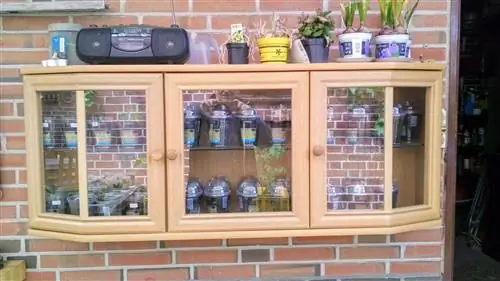
Cabinet with space for 50 to 60 rearing cups
Raising plants in a tomato cup
In our example, empty plastic cups of mini tomatoes (250 grams with four-hole plastic lids) are used, which are filled with a mixture of garden soil, compost and sand to about three centimeters below the rim. To be on the safe side, two seeds were placed in each bowl and then covered. After watering very carefully and removing the caps several times a week, the first green leaves appeared very tentatively after seven days.
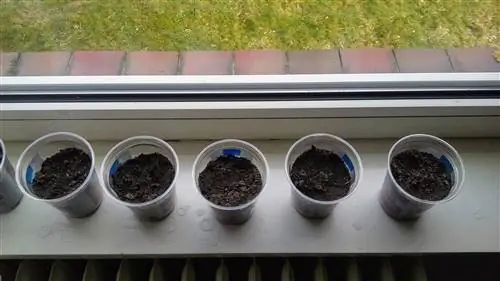
The cups remained open during the day in the approximately 20 °C warm room and were covered at night.
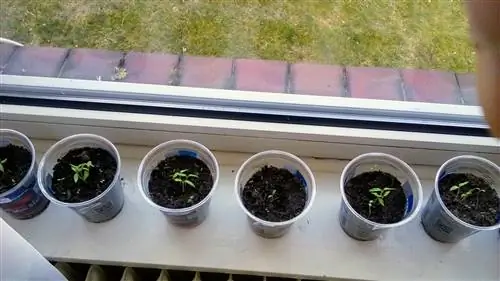
The first tentative green appears after seven days.
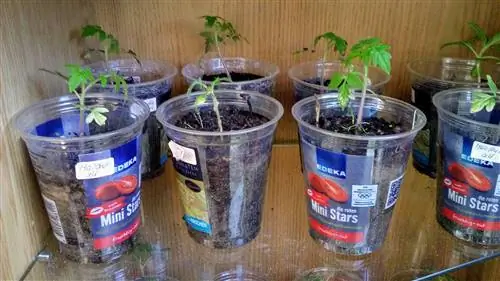
Almost three weeks after sowing it goes into the mini greenhouse cupboard.
Climatic conditions in the greenhouse for balconies
- to the beginning day and night under protection (with a cap) in a closed cupboard.
- After five more days of sunshinewithout a cap and with the cupboard door open and little water.
- After another two weeks the plantsonly go into the closet at night.
- Finally, a good five weeks after sowing, it goes out into the open.
Whereby Freiland refers to these very useful yellow plastic boxes from Deutsche Post, which were kindly made available to the author.
Instead of these transport containers, you can of course also use other containers, such as wooden fruit crates, which fit on every balcony and also look very decorative. Not to mention the aromatic scent of the plants, which is truly unique.
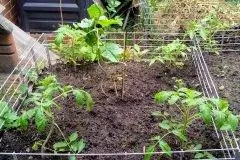
The tomatoes can develop even better on the (prepared) compost heap. However, the disadvantage here is the larger amounts of precipitation, which can lead to the dreaded brown rot, especially shortly before the harvest. However, these tomato plants were not grown from commercial seeds, but were a gift (so-called “old” varieties and disease-resistant) from a breeder.
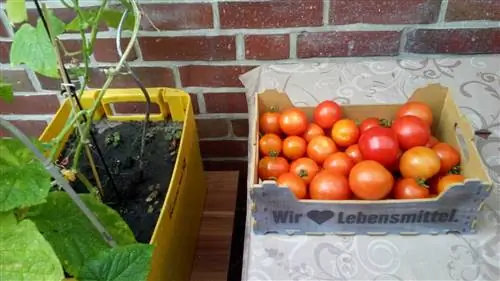
Small time lapse, towards the harvest. Now without words, because the taste is simply indescribable!
Greenhouse, balcony, fresh insecticide-free vegetables?
You can say it works and it worksin the smallest of spaces, with little work but with a lot of fun, definitely on YOUR balcony. And the question of costs? You can safely ignore it if you walk through the world with your eyes open. Even the work that such a miniature greenhouse entails is hardly worth mentioning, because the taste of the first home-grown tomatoes makes up for even the greatest effort.
Tip
It is best to plant plants in your balcony greenhouse that grow more in height than in width. Cucumbers are also ideal for small areas if the plants are coaxed up in time to sprout using a broom handle.

